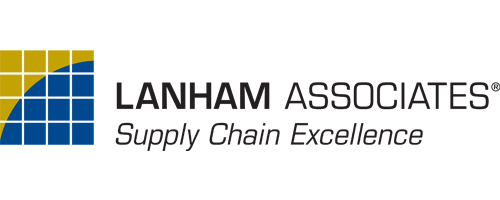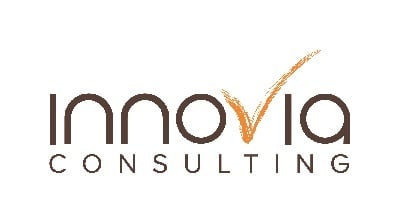When you start looking into the best strategies for building an inventory management system for your business, you don’t just want a generic system that looks like anyone else’s. Instead, you want an inventory management system that takes the unique needs of your business and your supply chain into consideration.
Look at the elements you may need to consider in choosing and building an inventory management solution.
1. Look at Big-Picture Goals
What are you hoping to accomplish with your inventory management system? Do you need to:
- Keep up with where inventory is across your warehouses and stores.
- Maintain your supply chain so that inventory continues to flow smoothly, even in times of potential disruption.
- Keep track of how inventory moves in and out of your business so that you can prepare for seasonal changes in sales.
- Track different types of inventory, including the raw materials needed to make specific items.
- Avoid inventory shortages or plan how to manage them.
You may also have specific goals for your business. For example, you may want to increase automation across your inventory management system, including solutions like warehouse automation or automated ordering. When you know the big-picture goals you have for your business, you can choose an inventory management system that fits within those goals, including both short-term solutions that will help you improve your initial inventory management efforts and longer-term solutions that will fit the ongoing needs of your business.
Plan for Growth
A healthy business is a growing business, and yours is no exception. You may already have a clear idea of how much growth your business has seen in recent years, or you may know what your long-term goals for your business might look like. Look at your plan for growth and how your inventory management system will need to fit into it.
- Are you planning to open more branches of your business in the future?
- Do you need to bring in more inventory?
- Do you want to expand your warehouses so that you have more spaces to store items?
- Will you need to take a more diverse geographic area into account in the future?
Today’s inventory management solution may be adequate for your current needs, but you may find that it will not grow and expand along with your business. By carefully considering your future needs and plans, you can ensure that your inventory management solution continues working for you long-term.
2. Evaluate the Features You Need
Inventory management systems can come with a number of bells and whistles. Some of those extra features are useful additions to your current inventory management solution. Other features, however, may provide less value—and you don’t want to end up paying more for features that your business can’t really use or doesn’t really need. Look at the product features that will benefit your business.
Hardware Integration
Do you already have barcode scanners or plan to install them? Do you need your inventory management system to integrate with automated vehicles in your warehouse? If you don’t have those solutions in place or don’t have plans to increase those solutions, you may not need an inventory management solution that integrates with them.
Automatic Order Generation
Using an inventory management system can help you automatically generate orders when you start to run low on specific items or when inventory drops below a certain level. This simple strategy can help you keep the inventory you need in place when you need it and ensure that you can better keep up with customer needs.
Holiday and Vendor Scheduling
Real-world factors can have a significant impact on your inventory. For example, your inventory needs may increase around the holidays or during specific times of the year. Vendor requirements may influence how often you can place an order or what your delivery schedule might look like. Effective inventory management software will help you manage those factors and better control your available inventory.
Inventory and Container Balance
As part of an effective inventory management system, you need to help manage shipping costs and balance inventory across your facilities. An effective inventory control solution may help ensure that you have adequately filled a container before shipping, so you aren’t paying to unnecessarily ship air, or keep track of the balance of inventory across facilities so that you can shift inventory as needed.
3. Consider Your Budget
Sometimes, your budget may heavily impact the inventory management solution you ultimately choose for your business. You need an inventory management solution that will allow you to manage your stock effectively, but you may also need a solution that won’t break your budget, especially during challenging times of the year. Make sure you have a clear budget in place when you start looking at inventory management systems.
4. Check the Learning Curve
Before you choose a new inventory management solution, make sure you take into consideration how much time it will take to learn. Some inventory management solutions may be similar to the ones you have used in the past or may offer an intuitive design that makes them easy to pick up. Others, however, may involve a more in-depth learning period. While that learning curve may be well worth it, consider questions like:
- How will that learning curve fit with your existing inventory management measures?
- What support will you receive while learning how to effectively use the new inventory management solution?
- What will you do if you have trouble getting employees to adopt the new system?
Choose an inventory management solution that is user-friendly when possible. A user-friendly solution can make a substantial difference in your brand’s overall connection.
Check Out StockIQ Today
Do you need an inventory management solution that will allow you to keep up with the key details of your inventory, from managing the day-to-day awareness of what is available in your facilities to ensure that you can maintain inventory balance across your warehouse and even deal effectively with potential disruptions? Contact us today to learn more about how we can help you achieve your inventory management goals.
Register here for StockIQ's webinar on July 27, 2023 @ 11 am ET, to learn the Essential Elements of Inventory Planning. If you are reading this article after the webinar. Follow the same link to access the recording.






